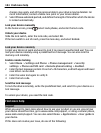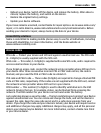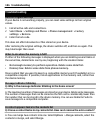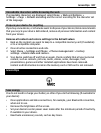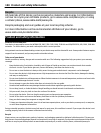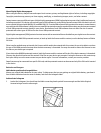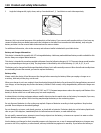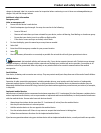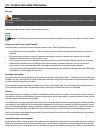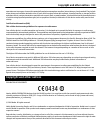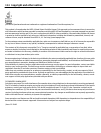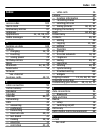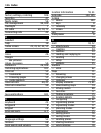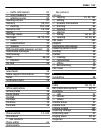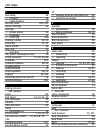
charger is damaged, take it to a service center for inspection before continuing to use it. Never use a damaged battery or
charger. Only use the charger indoors.
Additional safety information
Emergency calls
Make an emergency call
1 Ensure that the device is switched on.
2 Check for adequate signal strength. You may also need to do the following:
• Insert a SIM card.
• Remove call restrictions you have activated for your device, such as call barring, fixed dialing, or closed user group.
• Ensure that your device is not in an offline or flight profile.
• If the device screen and keys are locked, unlock them.
3 To clear the display, press the menu key as many times as needed.
4 Select Call.
5 Enter the official emergency number for your present location.
6 Select
.
7 Give the necessary information as accurately as possible. Do not end the call until given permission to do so.
Important: Activate both cellular and internet calls, if your device supports internet calls. The device may attempt
to make emergency calls both through cellular networks and through your internet call service provider. Connections in all
conditions cannot be guaranteed. Never rely solely on any wireless device for essential communications like medical
emergencies.
Small children
Your device, its battery and accessories are not toys. They may contain small parts. Keep them out of the reach of small children.
Medical devices
Operation of radio transmitting equipment, including wireless phones, may interfere with the function of inadequately
protected medical devices. Consult a physician or the manufacturer of the medical device to determine whether they are
adequately shielded from external RF energy. Switch off your device when regulations posted instruct you to do so, for example,
in hospitals.
Implanted medical devices
Manufacturers of medical devices recommend a minimum separation of 15.3 centimeters (6 inches) between a wireless device
and an implanted medical device, such as a pacemaker or implanted cardioverter defibrillator, to avoid potential interference
with the medical device. Persons who have such devices should:
• Always keep the wireless device more than 15.3 centimeters (6 inches) from the medical device.
• Not carry the wireless device in a breast pocket.
• Hold the wireless device to the ear opposite the medical device.
• Turn the wireless device off if there is any reason to suspect that interference is taking place.
• Follow the manufacturer directions for the implanted medical device.
If you have any questions about using your wireless device with an implanted medical device, consult your health care provider.
Product and safety information 111




